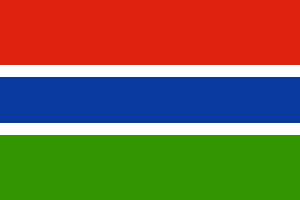
James Island (renamed Kunta Kinteh Island in 2011) and Related Sites on the River Gambia showcase different facets of the African-European encounter, from the 15th to 20th centuries. The River Gambia formed the first trade route into the interior of Africa and became an early corridor for the slave trade.
The first Europeans settlers on the island were the Courlanders, who called it St. Andrews Island and used it as a trade base from 1651 until it was captured by the British in 1661. The British renamed the island James Island and the fort as Fort James. They initially used it for the gold and ivory trade and later in the slave trade.
In 1695, Fort James was taken by the French after a battle with the English sailors. It was returned in 1697 and then captured again in 1702. Between 25 May 1765 - 11 February 1779 The Gambia was part of British Senegambia. As Britain withdrew from the slave trade, the fort was largely abandoned in 1779.

Four large groups of stone circles with over 1,000 monuments in a 100 km wide strip along a portion of the River Gambia date from between the 3rd century BC and the 16th century AD. The stones were quarried with iron tools and skillfully shaped into almost identical cylindrical or polygonal seven-ton pillars, on average about two metres high. Each circle contains between 8 and 14 pillars and is 4 to 6 metres across. All are located near burial mounds. This outstanding site is representative of a much wider megalithic zone in the region, which in terms of size, consistency, and complexity appears to be unrivalled anywhere in the world.
Lynn Salmon <>{
Last updated: June 13, 2023